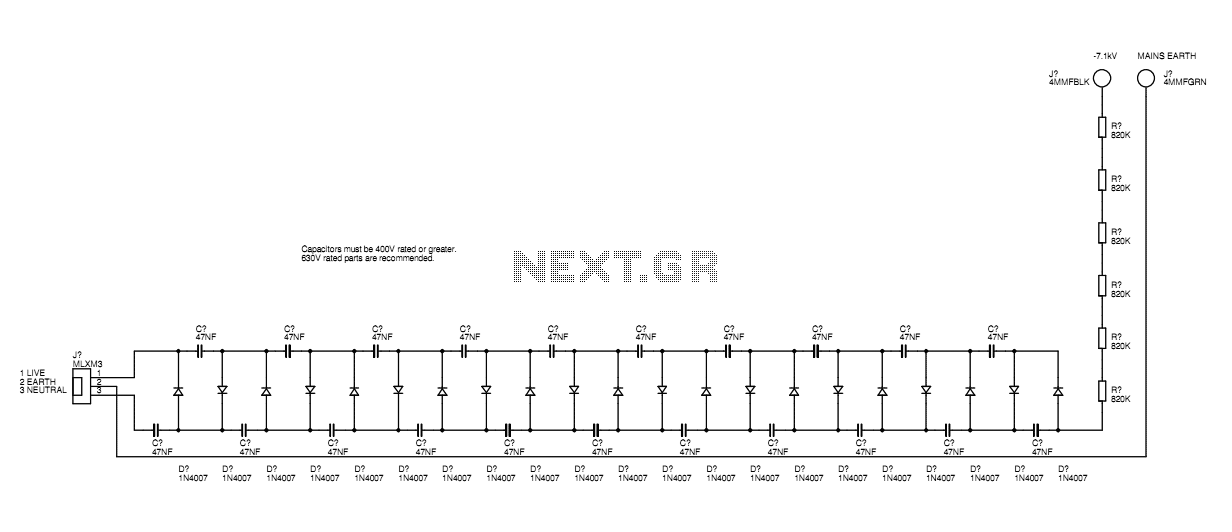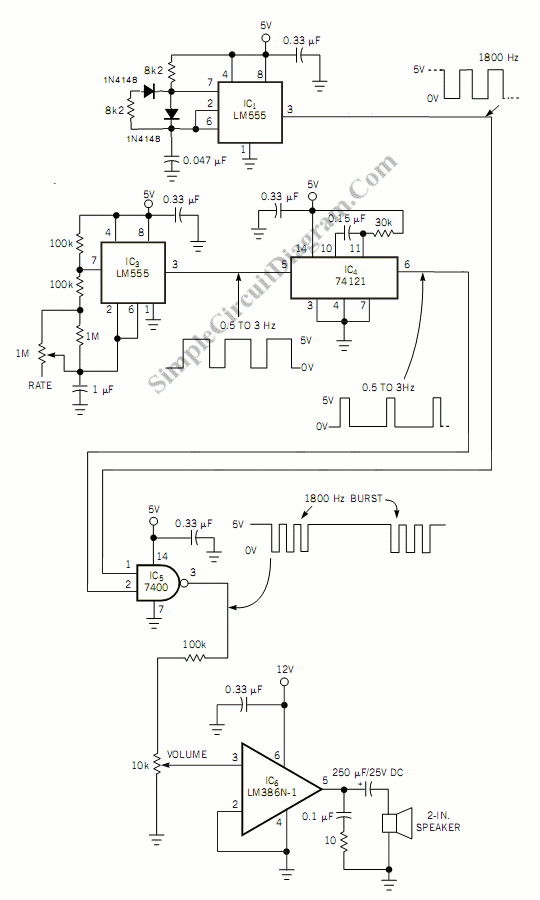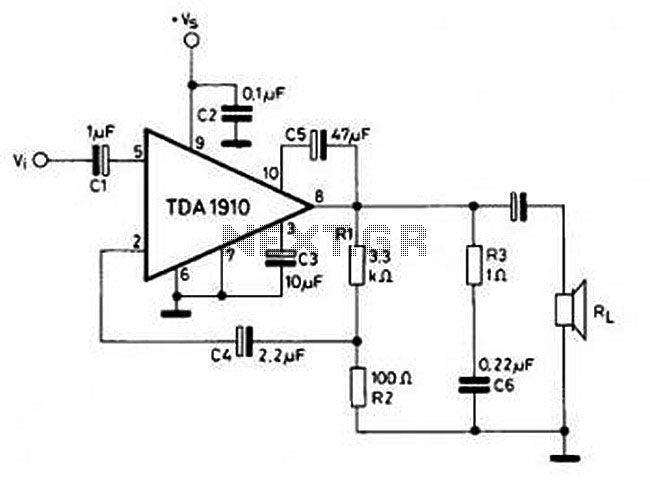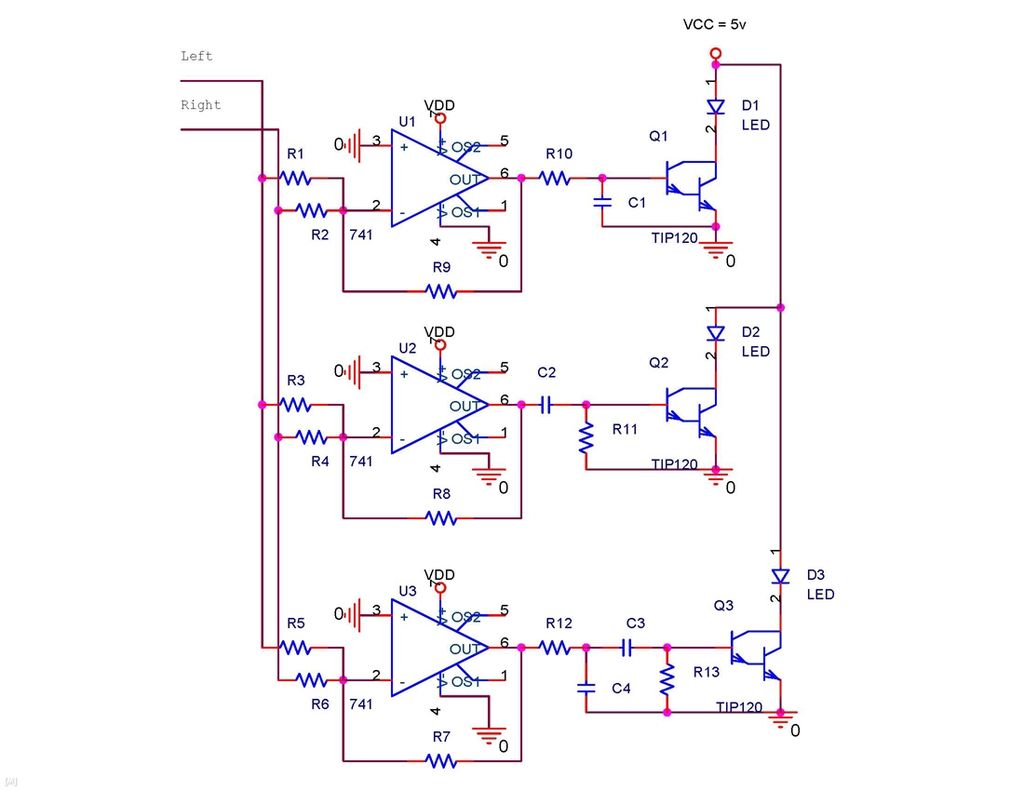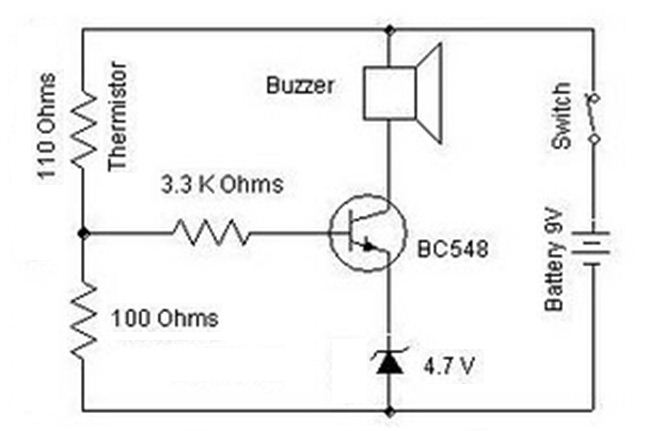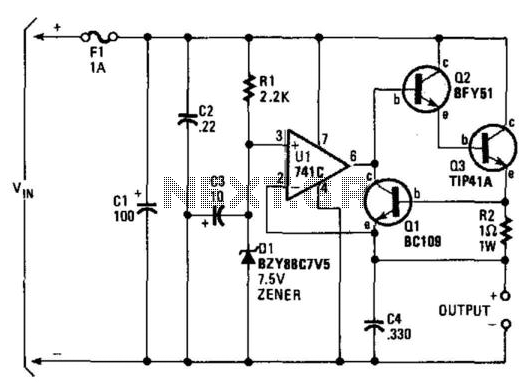
delay circuit for surround sound

This circuit utilizes the Mitsubishi M65830 Digital Delay chip, which has proven to be simple and effective for applications requiring a fixed delay. The serial data necessary for achieving various delay settings is not readily available and would significantly increase the circuit's complexity. The circuit design is largely based on the Mitsubishi data sheet and is expected to deliver good performance across a broad frequency range. The filters are tuned to approximately 9.5 kHz. While it is possible to reduce this frequency, there appears to be no compelling reason to do so, as this setting provides optimal response for rear channel speakers. The filter circuits employ internal operational amplifiers and require only external components. The module can be constructed easily, necessitating a 5 Volt power supply, connections for analog and digital ground, and input and output terminals.
The Mitsubishi M65830 Digital Delay chip serves as the core component in this circuit, designed for applications where a consistent delay is essential. This chip is well-regarded for its reliability and straightforward configuration, making it suitable for various audio processing tasks. The circuit's design adheres closely to the specifications outlined in the Mitsubishi data sheet, ensuring that it meets performance expectations across a wide frequency spectrum.
The tuning of the filters to approximately 9.5 kHz is a critical aspect of this design, as it aligns with the frequency range typically associated with rear channel audio output. Maintaining this tuning is advisable, as it has been determined to provide the best audio fidelity for the intended application. Altering the filter frequency may not yield significant benefits and could potentially degrade performance.
The internal operational amplifiers within the circuit facilitate the necessary signal processing while minimizing the need for additional external components. This design choice simplifies the assembly process and enhances reliability, as fewer components generally lead to reduced points of failure. The construction of the circuit as a module allows for straightforward integration into larger systems, requiring only a 5 Volt power supply and appropriate connections for both analog and digital ground, as well as input and output connections.
Overall, this circuit exemplifies an efficient and effective approach to implementing digital delay in audio applications, leveraging the capabilities of the Mitsubishi M65830 chip while ensuring ease of construction and optimal performance for rear channel audio systems.This circuit in below uses the Mitsubishi M65830 Digital Delay chip. This has been around for a while now, and is simple and effective (provided that a fixed delay is acceptable). The serial data required to obtain different delay settings is not easily obtained, and would add considerably to the complexity of the circuit.
This is the figure of th e circuit. The circuit is (almost) a direct adaptation from the Mitsubishi data sheet, and as shown will give good performance over a wide frequency range. The filters are tuned to around 9. 5 kHz, and although this could be reduced there does not seem to be any good reason to do so. This seems to be the optimum response for rear channel speakers, so should be left alone. The filter circuits use internal op amps, and only require the external components. The unit can be constructed as a module quite easily, requiring a 5 Volt supply, analogue and digital earth connections, and an input and output.
🔗 External reference
The Mitsubishi M65830 Digital Delay chip serves as the core component in this circuit, designed for applications where a consistent delay is essential. This chip is well-regarded for its reliability and straightforward configuration, making it suitable for various audio processing tasks. The circuit's design adheres closely to the specifications outlined in the Mitsubishi data sheet, ensuring that it meets performance expectations across a wide frequency spectrum.
The tuning of the filters to approximately 9.5 kHz is a critical aspect of this design, as it aligns with the frequency range typically associated with rear channel audio output. Maintaining this tuning is advisable, as it has been determined to provide the best audio fidelity for the intended application. Altering the filter frequency may not yield significant benefits and could potentially degrade performance.
The internal operational amplifiers within the circuit facilitate the necessary signal processing while minimizing the need for additional external components. This design choice simplifies the assembly process and enhances reliability, as fewer components generally lead to reduced points of failure. The construction of the circuit as a module allows for straightforward integration into larger systems, requiring only a 5 Volt power supply and appropriate connections for both analog and digital ground, as well as input and output connections.
Overall, this circuit exemplifies an efficient and effective approach to implementing digital delay in audio applications, leveraging the capabilities of the Mitsubishi M65830 chip while ensuring ease of construction and optimal performance for rear channel audio systems.This circuit in below uses the Mitsubishi M65830 Digital Delay chip. This has been around for a while now, and is simple and effective (provided that a fixed delay is acceptable). The serial data required to obtain different delay settings is not easily obtained, and would add considerably to the complexity of the circuit.
This is the figure of th e circuit. The circuit is (almost) a direct adaptation from the Mitsubishi data sheet, and as shown will give good performance over a wide frequency range. The filters are tuned to around 9. 5 kHz, and although this could be reduced there does not seem to be any good reason to do so. This seems to be the optimum response for rear channel speakers, so should be left alone. The filter circuits use internal op amps, and only require the external components. The unit can be constructed as a module quite easily, requiring a 5 Volt supply, analogue and digital earth connections, and an input and output.
🔗 External reference
Warning: include(partials/cookie-banner.php): Failed to open stream: Permission denied in /var/www/html/nextgr/view-circuit.php on line 713
Warning: include(): Failed opening 'partials/cookie-banner.php' for inclusion (include_path='.:/usr/share/php') in /var/www/html/nextgr/view-circuit.php on line 713
